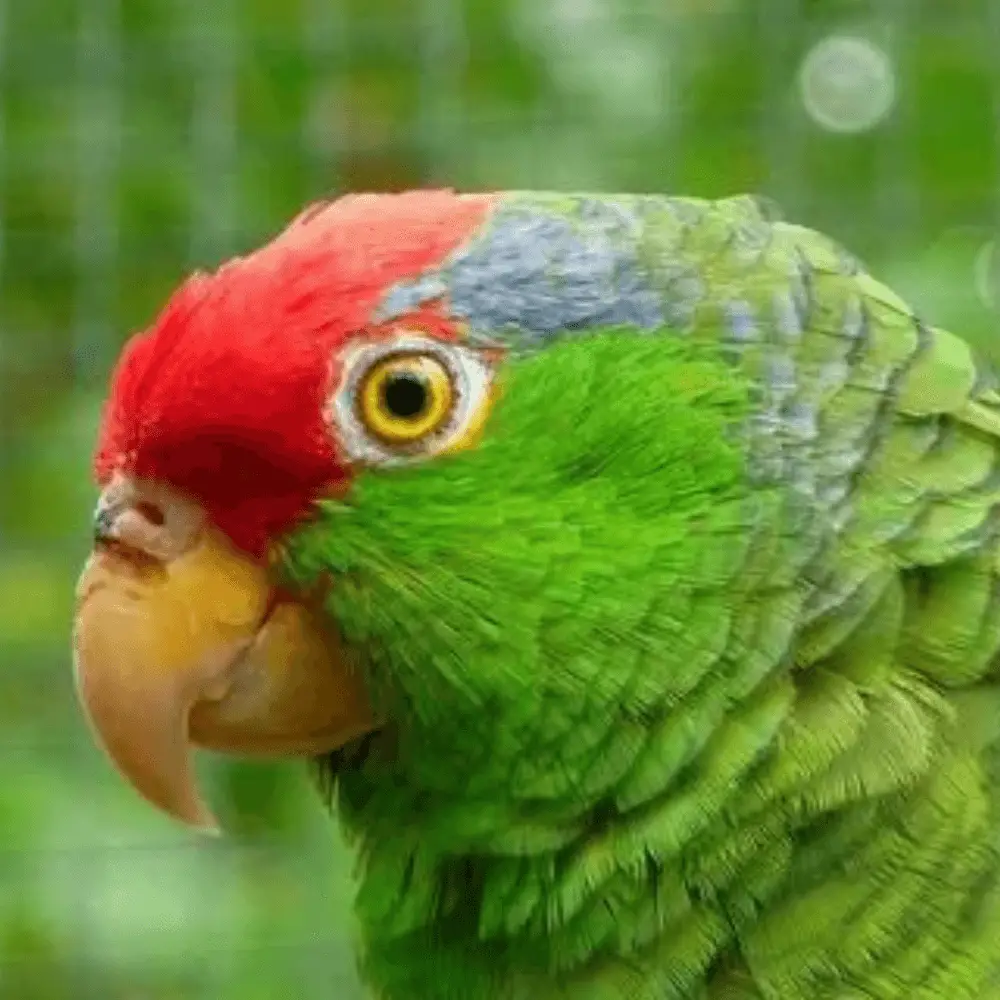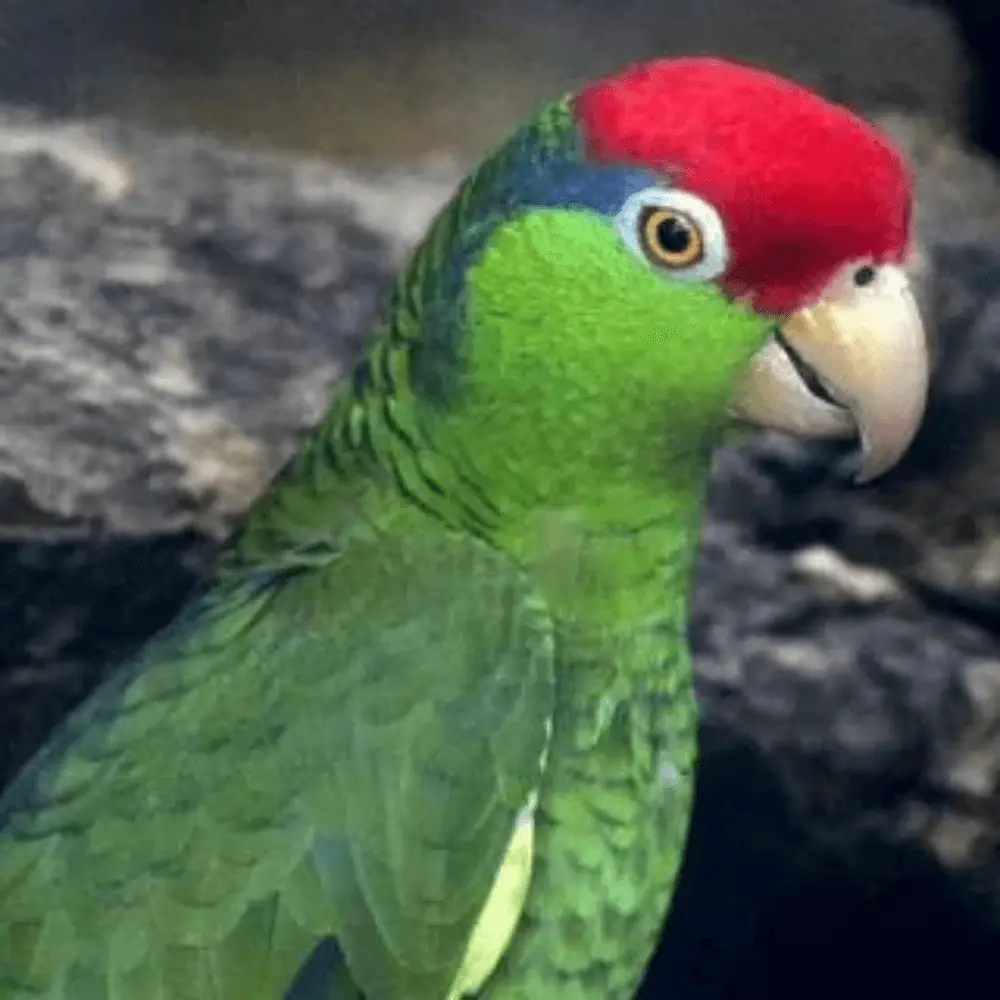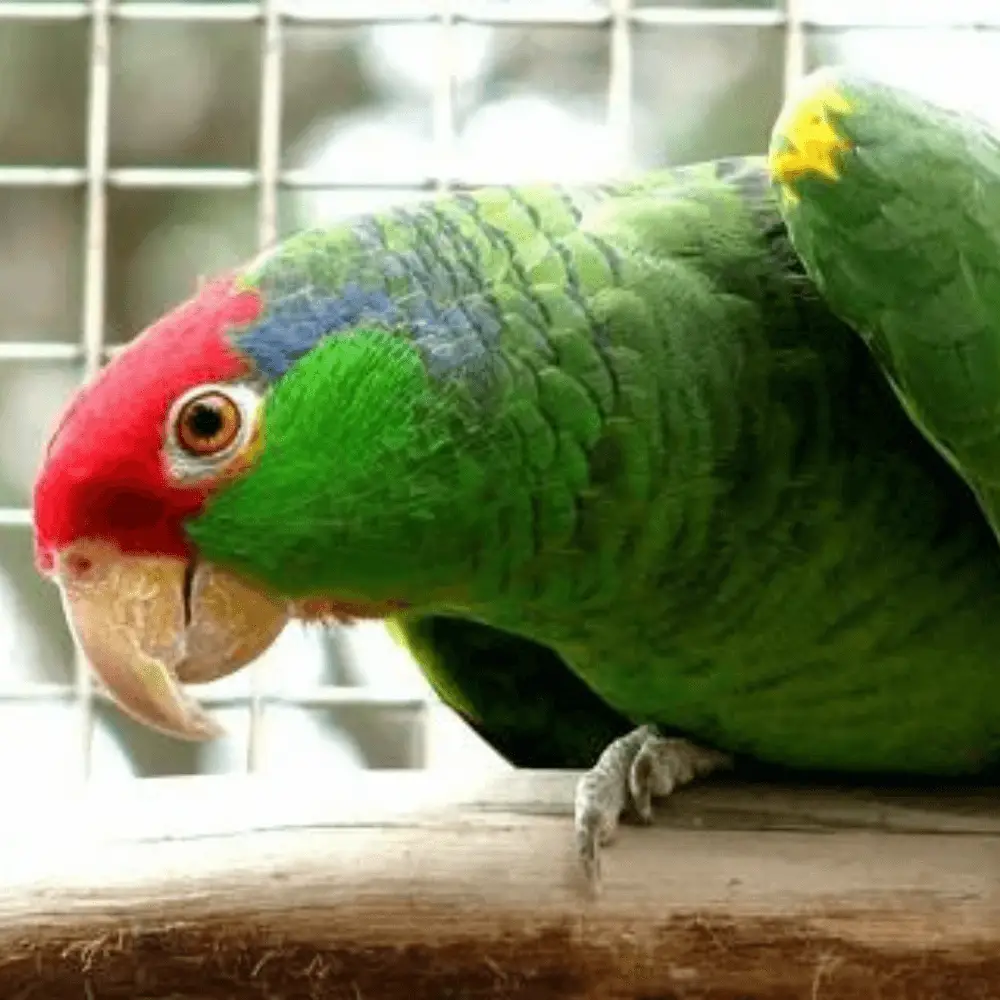Green-cheeked Amazon: 30.5-33cm. length and 294 grams. The Green-cheeked Parrot (Amazona viridigenalis) has the lores, front yes crown, bright red, with side margins on the back of the neck and upper neck, showing blue feathers with black tips; helmet ears light green, without feathered black tips; nape Boldly adorne
Coat Yes back green with some faint black tips; Grupa Yes upper tail-coverts, Green. green wing coverts with margins black on some weak feathers. The flight feathers, are mostly green, the primary, usually, with dark tips, dark blue or black, and the secondary, with blue tips with red in the outer webs.
From below, the green wings. Underparts are green and slightly yellowish; some feathers show visible dark tips. The tail is green, in general, with a yellow end. Bill has pale yellow; yellow iris; pale gray legs.
although females may have less average red in the head, probably not compatible with sexual dimorphism. The immature One has red in the very small head, with feathers in the central part of the crown green with ends of the subterminal band black and pale blue; feathers on the side of the crown, forming a wide blue band eye.
- Order : Psittaciformes
- Family : Psittacidae
- Genus : Amazona
- Scientific name : Amazona viridigenalis
- Quote : ( Cassin , 1853)
- Protonimo : chrysotis viridigenalis
Habitat

The habitat of the green-cheeked amazon son los deciduous bosques, gallery forests, and evergreen flood forests in the tropical lowlands, with non-breeding birds on dry ridges extending to 1,200 meters in temperate Pinus y Quercus.
frequentation cultivated areas where tall trees remain. Usually in flocks, usually larger than its sympatric conspecifics ( Red-lored Parrot and the Yellow-headed Parrot, with which sometimes mixed); in large flocks in winter. Used to roost communally.
Reproduction
They nest in hollow trees, including abandoned Woodpecker (Dryocopus lineatus) nests, usually 6-20 meters above the ground. Nests reported in trees Taxodium mucronatum , Bumelia laetivirens Yes Brosimum alicastrum . Reproduction April-May in Tamaulipas. The setting is 3 o 4 eggs. Only females incubate. The incubation lasts 28 days. Young people are cared for for nine weeks.

Food
Foods reported include Pinus seeds, maize, Ehretia berries, Pithecellobium Jew, acorns, and Melia azedarach berries; Introduced populations have adapted to the parks food sources, consuming fruits Juglans, Liquidambar, Eucalyptus Yes Chorisia.
Distribution and status

Northeast endemic Mexico, where Nuevo León records south (south of Monterrey ) through Tamaulipas (mainly in the center and south of the state) and east to San Luis Potosí, north to Veracruz, and southward. south until around 21ºN. They can be considered winter visitors to Brownsville, the southwestern tip of Texas, USA.
The current range appears to be limited to Tamaulipas Y San Luis Potosí, with no known breeding records in recent decades in Nuevo León o Veracruz, except for the apparently feral population in suburban Monterrey.
wild populations California, Florida, Oahu ( Hawaiian Islands ) Yes Puerto Rico (small numbers in dry southern forests).
Resident but nomadic in winter with some altitudinal movements that lead the birds to higher ground in winter (perhaps to exploit seeds and pine acorns) and with other movements farther from the breeding area, for example, south of Texas.
Apparently, they return to the breeding area in February, dropping along the ridge, but they are more common near the eastern coast, especially around the Sierra de Tamaulipas and on the eastern tracks of the Sierra Madre Oriental in Tamaulipas. On the contrary, sparsely distributed and often only a few strong points like the Sabinas River Valley, Tamaulipas.
The total population is estimated at 3,000-6,500. Popular in captivity locally and previously traded in large numbers internationally. It is clear that recent population declines are due to excessive trade and the continued destruction of habitats on a scale; they are also fired in some areas due to crop damage. There are no large protected areas close at hand and the illegal trade continues.
Conservation

• Current IUCN Red List Category: Endangered.
• Demographic trend: Degressive.
• Population size: 2000-4300
The combination of high levels of exploitation for the birdcage trade, habitat loss, and long-term reduced density estimates indicates that this species is declining very rapidly. Therefore, it is considered to be in danger of extinction.
Population justification
In 1992-1994, estimated densities in an area of Mexico indicated a wild population of 3,000 6,500 birds ( CE Enkerlin-Hoeflich a little., 1994 ). This estimate corresponds to approximately 2,000-4,300 mature individuals.
Recorded historical densities for the species were 25.2 birds/km2 in early 1970 ( Castro 1976 ), around 5.7 birds/km2 in an area 1992-1994 ( CE Enkerlin-Hoeflich in 1994, Enkerlin-Hoeflich 1995 ), indicating a population decline of up to 77.4% over a 20-year band. It is suspected that the decline will continue at a higher rate of 50% in ten years, due to threats from capture and forest clearing.

